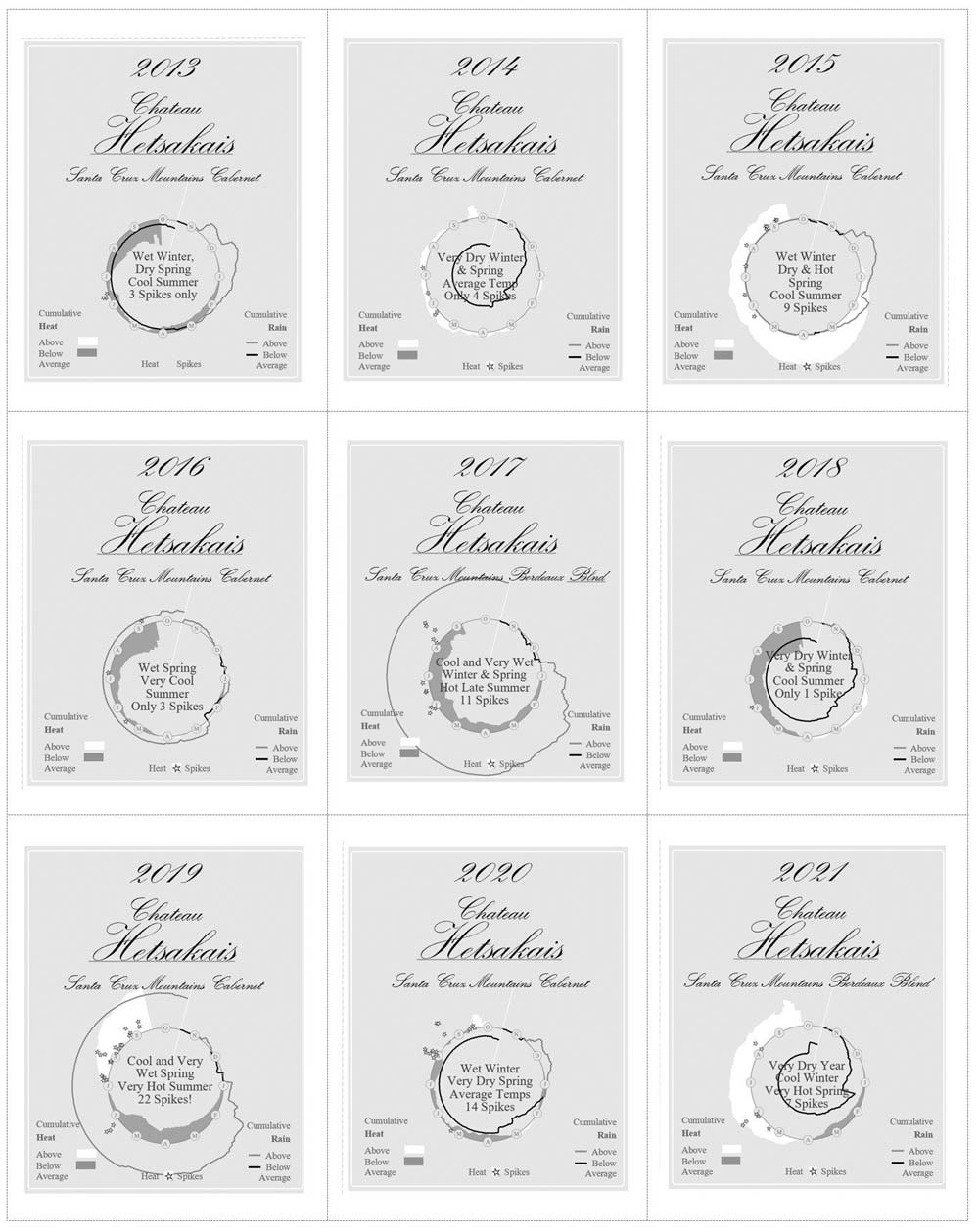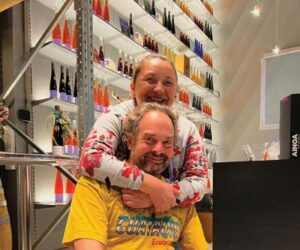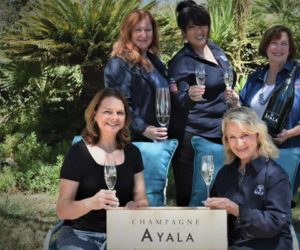Featured in the April-May 2023 issue:
Till Guldimann • Chateau Hetsakais — Saratoga, California
We decided to design and print our labels in-house and affix them to the bottles ourselves, as with all other steps. This required equipment (label printer, software, and labeler).
Equipment Choices: We purchased a special-purpose label printer in 2012 (Zeo! from QuickLabel Systems, www.quicklabel.com) with an associated spooler, label design and printing software, plus rolls of label stock. But the printer was poorly designed, and the software couldn’t be updated to work on Windows operating systems beyond XP. The company introduced a new printer at twice the price. So we ditched the printer and in recent years have switched to an external label-printing service Epic Labeling Solutions in Mountain View, California (www.fernqvist.com/); the material and printing costs for a simple design are around 50 cents per label.
We bought a basic electric labeler (Bottle-Matic II, from Dispensa-Matic, www.dispensamatic.com/) that works very well, is ideal for our requirements, is reliable, and is easy to operate. With it, we can easily label around 150 bottles per hour.
In 2022 we redesigned the front labels for the vintages of 2013 and beyond. The central idea was to add more information about the weather patterns influencing the grapes we grow and wine we produce. We boiled the weather data down to three critical parameters:
Relative Rainfall: How much rain fell during the vintage year (for the 2015 vintage, this would be from November 2014 through October 2015) and relative to the average for all years on record (2013 through 2021). This measure summarizes the availability of water.
Relative Sunshine/Temperature: This relays what’s known asthe Cumulative Growing Degree Days (CGDD) for the vintage year and how it compared to the average for all the years on record. This measure summarizes the presence of sunshine.
Distribution of Heatspikes: When the average hourly maximum temperature during the day exceeded 95 ºF (35 ºC). Heat spikes show when excessive temperatures force the vines to shut down.

Note that what matters most for characterizing how the weather influenced each vintage is the deviation from the average weather. The absolute weather is a characteristic of the location and part of the terroir. The deviation from average is a characteristic of the vintage in that time and place. All the data was collected from Davis weather stations located in the vineyard.
With the help of Gregory Niemeyer, Professor of Media Innovation at UC-Berkeley (https://www.gregniemeyer.com), we developed a circular graphic to represent a visual thumbprint of the relative weather conditions for each vintage. To learn more about it or about our labels, weather data, weather monitoring systems, or the rest of our vineyard and winemaking endeavors, check out our website at: http://chateauhetsakais.com




